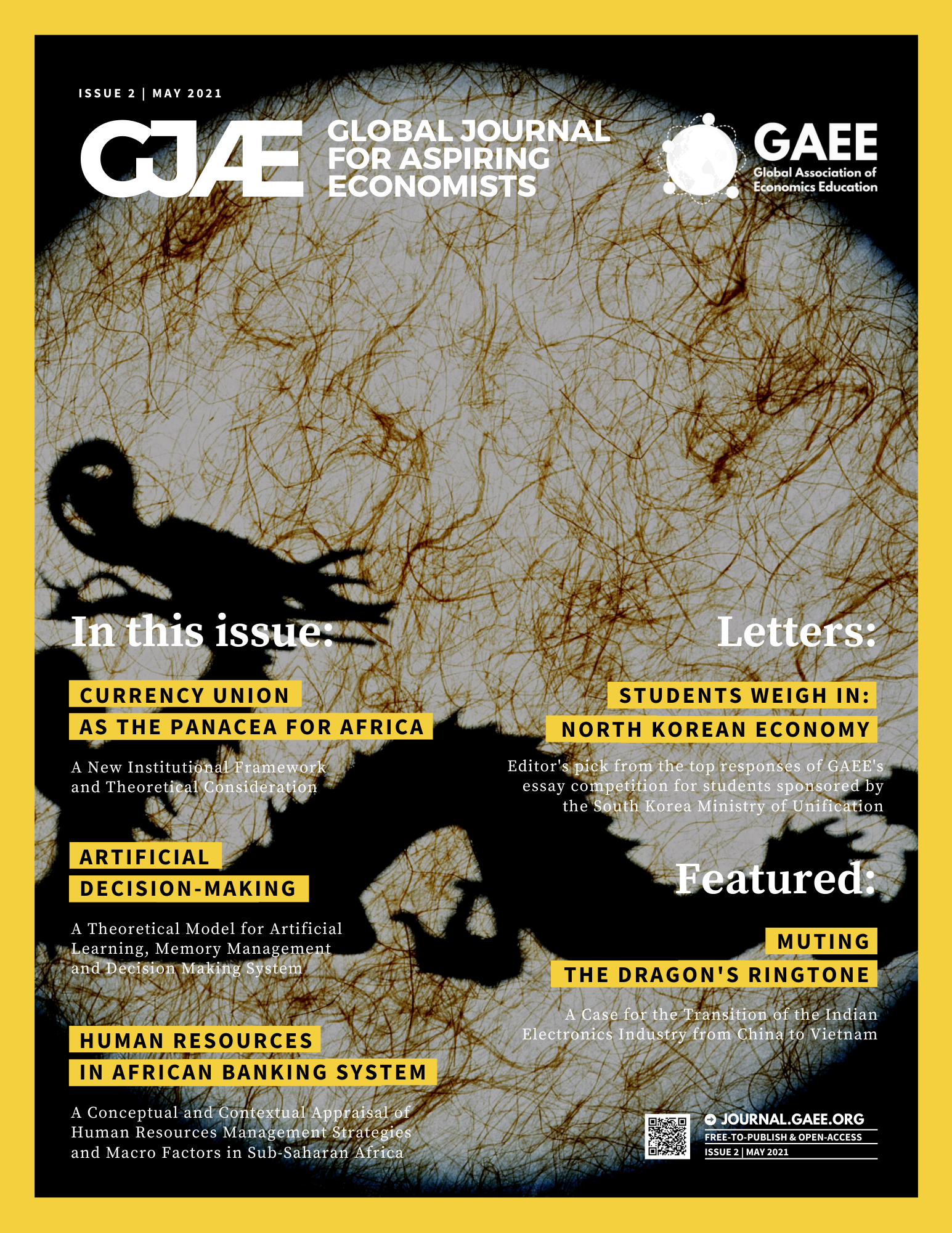Current Issue
Vol. 1 No. 2 (2021)
Published May 13, 2021
The Global Journal for Aspiring Economists (GJAE), published by the Global Association of Economics Education (GAEE) under ISSN 2835-3102, provides a free and open platform for high-level economics discourse among scholars and students in developing countries and marginalized communities through our no-fee open-access model.
Research Articles
4-26
